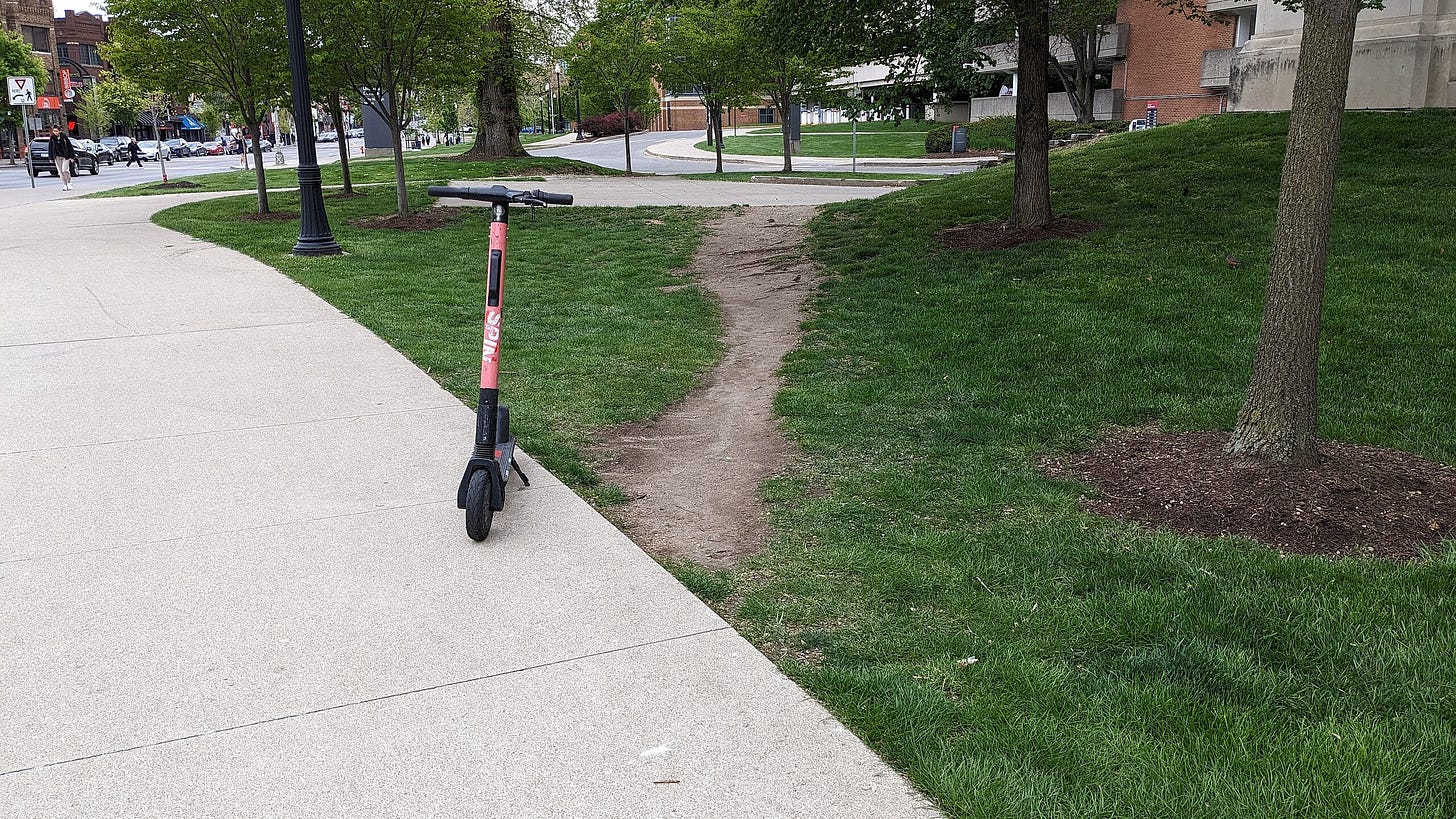Paths, labor and the real cost of desire
Have you heard of desire paths? A desire path is the path, worn down by hundreds of feet, cutting a route from A to B - often not where the “official” path has been built.
Desire paths appear when routes can be freely chosen. These impromptu ways are shaped by ease of access, response to the terrain, and generally being the easiest way to get somewhere.
When desire comes up against greater challenges, adaptations have to be made. In England, this was once the main road from Bath to London.
It’s not even a minor road today, but a track on someone’s farm. The main road was built, pushing this track into obsolescence (meanwhile, elsewhere between Bath and London there are still Roman roads in use).
One example of the adaptations of desire is how much work a route might be. In the great days of railroad building, workers were making their way across the land, cutting through the landscape with tracks that would become railways. These were planned by engineers and railroad bosses based on their goals, the terrain, the land they could access. These were abstract routes, drawn out on maps: not based on user experience or choice.
And building railways demonstrated on a big scale the choices made depending on the local balance of land and labor. That is to say, which of them you had in surplus. In Switzerland, the railway builders faced the challenge of building tracks through mountains. They tunneled through. They didn’t have much space to do anything else (short on land) and had plenty of access to workers (long on labor). In the United States, by contrast, they were long on land and short on workers. So they went around the mountains. It added miles to routes, but was easier than tunneling.
How many other works that shape our lives are dictated by the availability of workers? A shortage of workers will make employers offer higher pay, (as observed in Europe centuries ago after the plague: the population drop meant workers could command higher wages).
Or they find options that need fewer workers. Employers, and industries, have in different times and places turned to mechanization, or imports - effectively offshoring their labor needs. Rather than pay people to do or make a thing, buy the thing already processed somewhere else.
At a consumer level, we choose to buy cheap things, made by someone else, somewhere else. Since the appearance of ebay in the 1990s, the arrival of China in the WTO, we’ve become increasingly accustomed to buying cheaper stuff, whether online or in big box stores.
We got used to getting stuff for very little. We shrugged as an increasing amount of stuff in our homes were shipped in from China made of plastic. The factory in your town that used to make those things back when they were solid, repairable? That's gone.
Things got ever cheaper until they seemed almost free. I was recently shopping for ribbon. On Alibaba.com I could order rolls of it for pennies. Prices no textile mill in the West could match (and there are few mills left anyway).
Partly this is due to consumers being able to import low value goods without paying taxes or duty: an importer making larger purchases would have to pay those costs. Foreign sellers undercut local producers by selling direct to consumers. Specifically with China their government’s own currency manipulation keeps prices particularly low for their exports, and they charge little for postage. They make it cheap because they’re long on labor.




